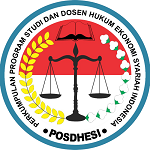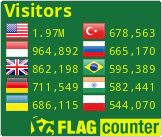.::. CITEDNESS IN SCOPUS .::.
Peer Review Process
The editor-in-chief will assign the manuscript to the Managing Editor for further handling. The Managing Editor will request at least two scientists to review the research article manuscript. All manuscripts are subject to double-masked peer-review; both the reviewer and author identities are concealed from the reviewers, and vice versa, throughout the review process to meet standards of academic excellence. All papers are thoroughly peer-reviewed. We only publish articles reviewed and approved by highly qualified researchers with expertise in a field appropriate (at least two reviewers per article). Mu'amalah: Jurnal Hukum Ekonomi Syariah maintains the standards of double-masked peer review while increasing the efficiency of the process. All research articles published in the Mu'amalah: Jurnal Hukum Ekonomi Syariah undergo full peer review, the key characteristics of which are listed below:
- Mu'amalah: Jurnal Hukum Ekonomi Syariah is applying a two-stage process: After the technical check, the editorial team will review your submission for publication suitability in the journal. If suitable, it will be assigned to one of the editors to handle the review and decision process.
- If your manuscript matches the scope and satisfies the criteria of Mu'amalah: Jurnal Hukum Ekonomi Syariah, your paper will be assigned to an Editor. The Editor will identify and contact two reviewers who are acknowledged experts in the field. Since peer review is a voluntary service, it can take some time. Still, please be assured that the Editor regularly reminds reviewers if they do not reply promptly. During this stage, the status will appear as "Under Review."
- Once the Editor receives the minimum number of expert reviews, the status will change to "Required Reviews Complete."
- It is also possible that the Editor decides that your manuscript does not meet the journal criteria or scope and should not be considered further. In this case, the Editor will immediately notify you that the manuscript has been rejected and may recommend a more suitable journal.
Peer review of referred papers:
Editors of the Mu'amalah: Jurnal Hukum Ekonomi Syariah will decide promptly whether to accept, reject, or request revisions of referred papers based on the reviews and editorial insight of the supporting journals. Also, Editors will have the option of seeking additional reviews when needed. The authors will be advised when the Editors decide that further review is required. The editor will first review submitted articles. The topic and writing style are according to the guidelines. All manuscripts are subject to double-masked peer-review; both the reviewer and author identities are concealed from the reviewers, and vice versa, throughout the review process to meet standards of academic excellence. In short, the steps are:
- Manuscript Submission (by author).
- Manuscript Check and Selection (by manager and editors).
- Editors can accept, reject, or review each manuscript directly. Before further processing steps, a plagiarism check using Turnitin is applied for each manuscript.
- Manuscript Reviewing Process (by reviewers).
- Notification of Manuscript Acceptance, Revision, or Rejection (by editor to author based on reviewers' comments).
- Paper Revision (by author)
- Revision Submission based on Reviewer Suggestion (by author) with a similar flow to point 1.
- If the reviewer seems satisfied with the revision, notification for acceptance (by editor)
- Galley proof and publishing process.
The steps point number 1 to 5 are considered as 1 round of the peer-reviewing process (see the grey area in the figure). The editor or editorial board considers the feedback provided by the peer reviewers and arrives at a decision. The following are the most common decisions:
- Accepted, as it is. The journal will publish the paper in its original form;
- Accepted by Minor Revisions, the journal will publish the paper and ask the author to make minor corrections (let authors revise within the stipulated time);
- Accepted by Major Revisions, the journal will publish the paper provided the authors make the changes suggested by the reviewers and editors (let authors revise within the stipulated time);
- Resubmit (conditional rejection): the journal is willing to reconsider the paper in another round of decision-making after the authors make significant changes;
- Rejected (outright rejection), the journal will not publish or reconsider the paper even if the authors make major revisions.







